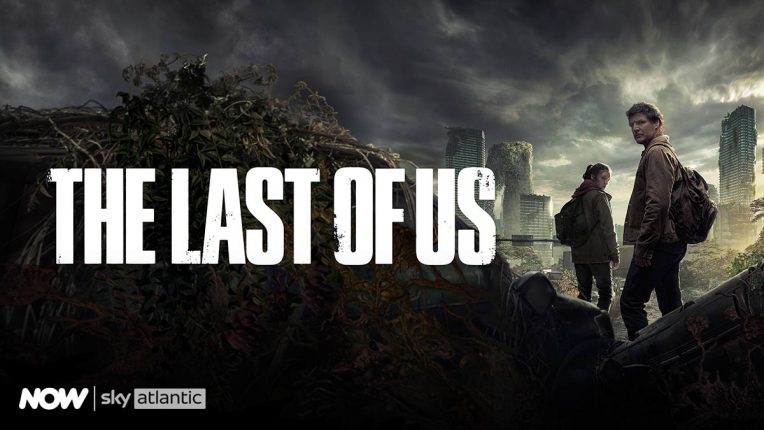The Last of Us: A show about the complexities of love
Looking at how the show’s post-apocalyptic themes influence a story largely focused on love.
Content Warning: This article contains major spoilers.
Trigger Warning: This article mentions sexual abuse and suicide.
On March 13, 2023, The Last of Us (2023), a drama and adventure streaming on Crave, ended its nine-episode first season with a riveting and heartbreaking finale. As the series was adapted based on a video game of the same name, viewers have quickly learned to love the series for its immersive and heart-wrenching story.
Created by Neil Druckmann and Craig Mazin, the show opens with single father Joel (Pedro Pascal) who lives in Texas with his fourteen-year-old daughter Sarah (Nico Parker). A mutated fungus called cordyceps—known to attack one’s brain and take control of the host—contaminates flour and causes a global pandemic in a single night. Through the consumption of contaminated flour or by getting bitten by people under the control of cordyceps, one becomes an “infected.” As Joel, Sarah, and Joel’s brother Tommy (Gabriel Luna) attempt to flee their diseased town, Sarah is tragically shot and killed by a soldier.
Jumping 2o years ahead, the Federal Disaster Response Agency (FEDRA) runs “quarantine zones” (QZ) throughout the country. Joel, still grieving the death of his daughter, lives in the Boston QZ. The show quickly reveals that there are two main groups within its postapocalyptic world: the fascist FEDRA and The Fireflies—a rebel militia group. With his partner Tess (Anna Torv), Joel becomes a violent and hardened smuggler who sneaks in and out of the QZ for supplies.
In exchange for a car battery, Marlene (Merle Dandridge), the head of The Boston Fireflies, tasks Joel with escorting a fourteen-year-old girl named Ellie (Bella Ramsey) to the Massachusetts State House—she is immune to the cordyceps. As Tess dies in an altercation with the infected, Joel reluctantly begins his journey with Ellie and tries to create a cure.
While The Last of Us appears to be just another show about survival and zombies, at its core, it is truly about love—in both romantic and familial ways.
The third episode titled “Long, Long, Time” portrays romantic love—an aspect that is not often found within the show’s post-apocalyptic genre. The episode follows Bill (Nick Offerman), a “survivalist” who lives alone in his pre-outbreak neighbourhood in Baltimore, Maryland. One day, Frank (Murray Bartlett), who becomes Bill’s lover, falls and gets hurt in a pit dug by Bill. Bill and Frank fall in love and remain together for twenty years. Later, it is revealed that Frank is wheelchair bound due to a degenerative disease. When Frank asks Bill to help him end his life, he agrees, but insists on getting married first. Same-sex marriage was not legalized in Maryland until 2013, and because the cordyceps outbreak took place in 2003, Bill and Frank’s love was not so stifled by the homophobic American system which was rampant before the outbreak. They die together, peacefully in bed.
Love in The Last of Us can be misguided as well. Episode five, “Endure and Survive,” shows Kathleen (Melanie Lynskey), an antagonistic leader of a rival group, being overthrown in the Kansas City QZ and violently avenging the murder of her brother. Her main target is Henry (Lamar Johnson), a survivor who exposed Kathleen’s brother to FEDRA so that he could get medicine for his little brother Sam (Keivonn Montreal Woodard), who suffers from leukemia. When Sam is bitten by an infected, Henry must shoot him. But with hesitancy and distraught after what he had done, he turns the gun on himself. While Henry does everything he can to protect his brother, he cannot protect him from the cordyceps.
Furthermore, the shows describes love as an excuse to do terrible things. Episode eight, “When We Are in Need,” did not feature any run-ins with infected beings. Instead, Ellie and a critically injured Joel must fight off a cannibalistic preacher, David (Scott Shepherd). David leads a group of survivors in Colorado. When a girl about Ellie’s age is distraught that her father has been killed, Ellie and Joel are identified as the killers. The girl demands justice and David slaps her, explaining that her dad is most likely dead and that he can be her father now. Love shifts into a predatory excuse. David feeds the girl—and the rest of the congregation—her father’s remains. When he finds Ellie, it is obvious that he has nefarious intentions. Ellie fights for her life as he attempts to assault her, and she manages to kill him.
Themes of love are rampant throughout the series in differing ways. Joel’s love for his late daughter drives him in keeping Ellie alive. Throughout much of their journey, they trek, on foot, from Boston, Massachusetts to Salt Lake City, Utah. While they walk, Joel teaches Ellie to hunt, and Ellie reads to him from a book of puns. Ellie and Joel create a father-daughter bond that warms the hearts of audiences and balances the many gory scenes within the series.
The final moments of the season show Joel and Ellie finding The Fireflies, only for Joel to discover that they intend to kill Ellie and create a vaccine using her brain. Joel does not consent for Ellie to go through with the experiment and makes the decision to save her by killing all The Fireflies, including Marlene. He then lies to Ellie, telling her that they couldn’t make a vaccine and raiders attack the building—no one survives.
The Last of Us leaves viewers asking questions about morality. Was Joel right to sacrifice a cure for Ellie? Were The Fireflies correct in their decision to use Ellie? These questions are unanswerable, but Joel makes his decisions based on the love he holds toward his daughters.
Theatre Erindale Correspondent (Volume 50); Associate Arts & Entertainment Editor (Volume 49) — Megan is majoring in English with minors in Creative Writing and History. She served as Associate Arts & Entertainment Editor for Volume 49. Her love of the arts and experience in theatre and music are the backbone of Megan’s work with The Medium. Aside from her academics and journalistic endeavours, Megan can be found writing original music for streaming platforms, playing her pink Fender Jazz Bass, writing spooky detective stories, longing for the mountains of BC, and watching Disney+. Her preferred instruments of writing are her notes app and her 1970s Erika typewriter. You can connect with Megan on Instagram, X, and LinkedIn.


